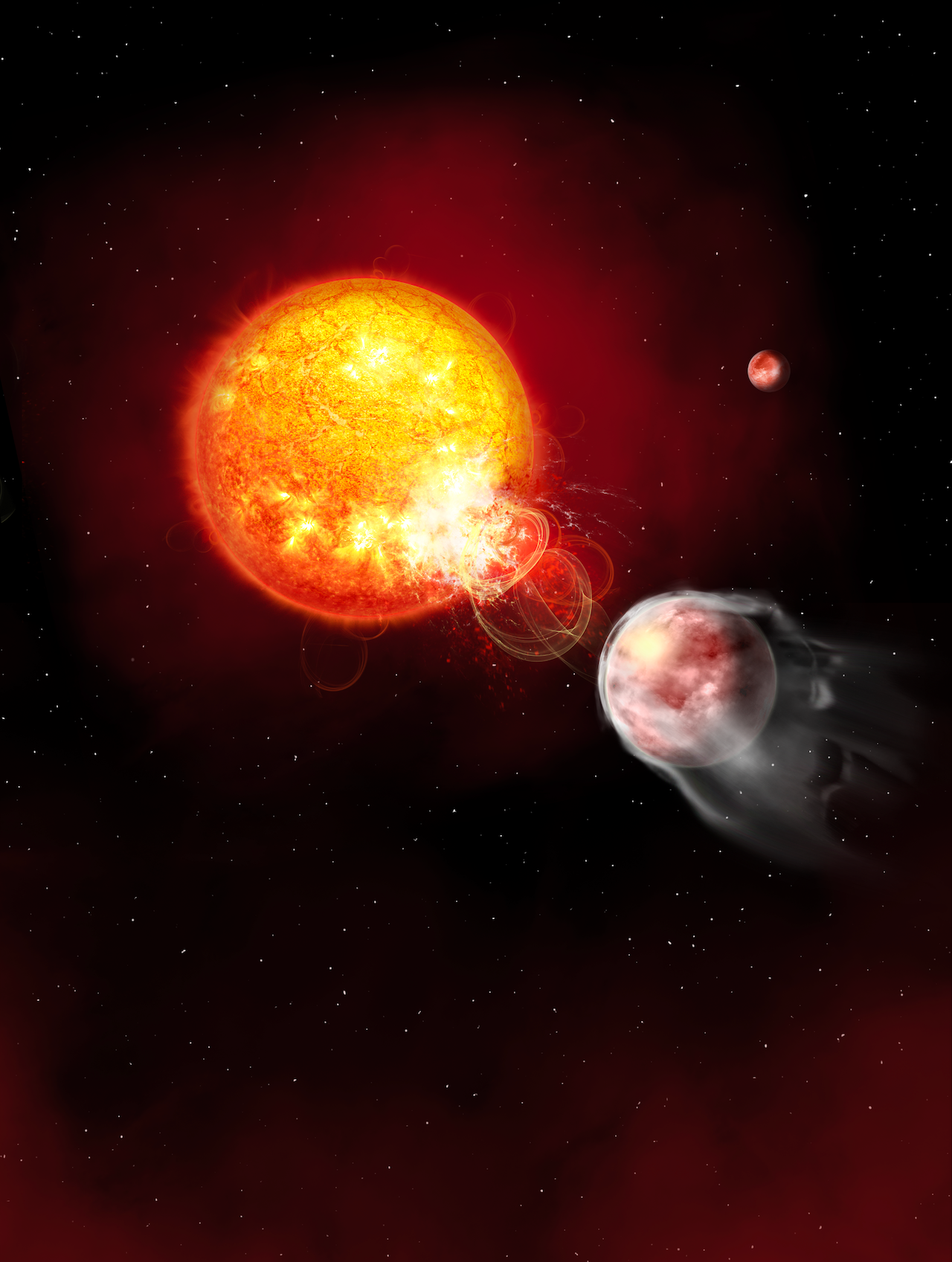Astronomers Spot Star Toasting Its Closest Planet

🔎 The Discovery
Astronomers discovered a giant planet, HIP 67522 b, located about 400 light-years away, that orbits its star so closely it likely causes frequent flares from the star’s surface. These flares heat and inflate the planet’s atmosphere, making it one of the most extreme planetary environments ever observed.
🌍 Key Facts
On Earth, solar flares cause “space weather” that might interrupt radio signals or harm satellites. But our atmosphere shields us from dangerous effects, and our distance from the Sun keeps us safe from direct flare impact.
Not so for HIP 67522 b.
This gas giant orbits a young star, only 17 million years old, completing one orbit in just seven Earth days. The tight orbit places the planet dangerously close to its star — a type known for intense flaring during its youth. Here, proximity appears to trigger regular flares.
💥 How It Works
The planet and its star form a destructive magnetic connection.
HIP 67522 b seems to interact with the star’s magnetic field, sparking violent flares. These flares whip back energy and radiation, inflating the planet’s atmosphere even more. Despite having only 5% of Jupiter’s mass, its heated atmosphere has expanded to Jupiter’s size.
But this bloated state may not last.
Constant radiation could strip away the planet’s atmosphere. In the next 100 million years, it may shrink into a “hot Neptune”, or even a “sub-Neptune” — a smaller class of planets commonly found in our galaxy but absent in our solar system.
🔭 How They Discovered It
HIP 67522 b lies too far away to observe flares hitting its surface directly. So how did scientists figure it out?
A team led by Ekaterina Ilin (Netherlands Institute for Radio Astronomy) used data from NASA’s TESS and ESA’s CHEOPS space telescopes. These telescopes track light dips (transits) when planets pass in front of stars. They also capture sudden brightness spikes from stellar flares.
By combining five years of transit and flare data, and applying detailed statistical analysis, the team found HIP 67522 b gets six times more flares than expected. This confirmed a magnetic link between the planet and its host star.
👩🔬 The Team Behind the Breakthrough
Researchers from the Netherlands, Germany, Sweden, and Switzerland, led by Ekaterina Ilin, published their findings in Nature on July 2, 2025. Their paper, titled
“Close-in planet induces flares on its host star”, shows how a planet can actively affect its star — a rare and powerful interaction in exoplanetary science.


What i do not realize is in fact how you are no longer actually much more wellfavored than you might be right now Youre very intelligent You recognize thus considerably in relation to this topic made me in my view believe it from numerous numerous angles Its like men and women are not fascinated until it is one thing to do with Lady gaga Your own stuffs excellent All the time handle it up
Heads up, students! Saw some internship opportunities listed on winzointernship. Might be worth checking out if you’re looking to gain some experience. Good luck!
Hey gamers, wanted to share my experience with lc88win. I’ve been playing here for a bit and the payouts have been legit. Plus, the variety of games keeps things interesting. Check them out at lc88win.
What’s up, players! 236betcom… hmm, it’s okay. The games are alright, but the customer support could be better. Just being honest. Worth exploring if you’re curious 236betcom.